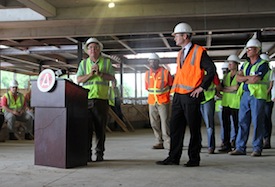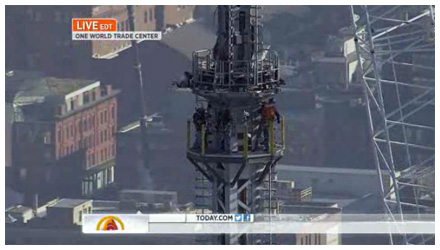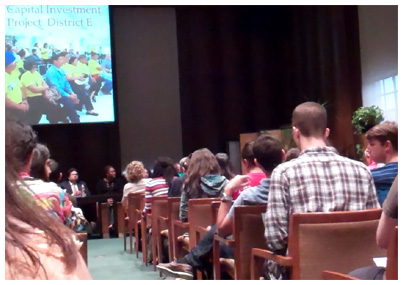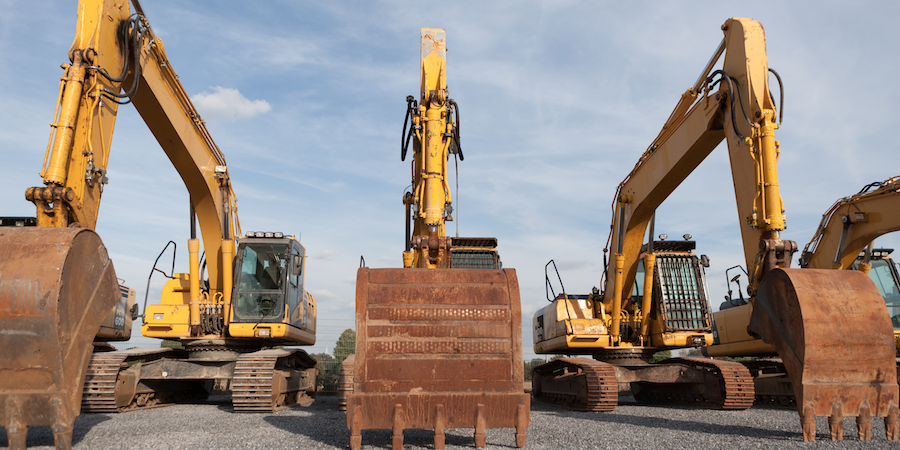Last Wednesday was a great day for reflection about the workforce issue, at least for me. It began at a lunch gathering of Associated Builders and Contractors Past Presidents and the current executive committee to gather insight and input for the coming year’s planning session objectives, as requested by the ABC Greater Houston Chapter incoming chair Tim Ricketts. As Tim asked the past presidents for recollection of significant issues, accomplishments, and struggles during their respective terms, the issues of workforce, craft training, and unions dominated the discussion. Familiar themes of owner input and related issues, union difficulties, and economics were brought up. For example, owners were paying a significant training contribution via the union wage and fringe benefits to contractors, but didn’t see the value in paying contractors or ABC to do training in a merit shop environment.
Reshaping the Construction Industry


In the past several weeks, I have been asked by local media to comment on the labor shortage in the commercial construction industry and how it is impacting the consumer. Most people in our industry know the obvious answers: the consumer is experiencing higher costs for a less-skilled workforce. Currently, the pool of qualified craft workers is extremely limited in our area.However, the opportunity side of this shortage is equally obvious. Legislators have come to realize that college is not for everyone – particularly the high cost of higher education and the associated debts that make it harder to afford. High schools are realizing the importance of “career ready” as opposed to only “college ready”. Owners are beginning to understand that they should be more in control of procuring the level of worker they want and need on their projects. Contractors are beginning to realize that to build what is anticipated to be required in the next twenty years, a “sustainable workforce” is more than just words.
May 21, 2013
This month, the Houston Chapter of the Associated General Contractors (AGC) celebrated its 90th anniversary. It was founded in 1923 when Houston was a town of barely 60,000 folks. Over 200 members, elected officials, former chapter leaders, and friends attended the celebration. The evening was capped by comments from former and current chapter leaders and the Mayor of Houston. It was a fitting celebration of the long and storied history of the AGC Chapter in Houston and the skyline they have created.
May 20, 2013


PPI, other cost measures show little change; housing starts tumble but permits soarEditor’s note: Construction Citizen is proud to partner with AGC America to bring you AGC Chief Economist Ken Simonson's Data DIGest. Check back each week to get Ken's expert analysis of what's happening in our industry.The producer price index (PPI) for finished goods dropped 0.3%, not seasonally adjusted (-0.7%, seasonally adjusted), in April and 0.6% over 12 months, the Bureau of Labor Statistics (BLS) reported on Wednesday. The PPI for inputs to construction—a weighted average of the cost of all materials used in construction plus items consumed by contractors such as diesel fuel—slipped 0.1% for the month and inched up just 0.4% year-over-year. Inputs for residential construction were flat for the month and increased 1.4% in price over the year
May 20, 2013


In October 2010, Chamberlin Roofing & Waterproofing embarked on a project that would mark a time of change for the City of Dallas and its residents. Woodall Rodgers Freeway is a major highway that runs just north of Downtown Dallas directly through the city. It is a connector freeway between two other large highways. When Wodall Rodgers Freeway was constructed in 1962, highways were the most popular mode of transportation. City officials and wealthy landowners were building homes and purchasing land outside of Dallas city limits, thus making highways extremely appealing.In 2000, Dallas' population reached over two million people, and the highway infrastructure was no longer the most optimal means of transportation. Downtown and uptown were two of the most popular areas for nightlife, business, and residential growth, and there was only one thing standing between them: Woodall Rodgers Freeway.
May 17, 2013


On Wednesday, May 15, 2013 the AGC Annual Safety Stand Down was held on commercial construction projects throughout the Greater Houston area. It was a day dedicated to emphasizing the importance of each construction worker returning home safely every day. I was fortunate to participate in two separate events.With the impressive ExxonMobil construction project in the background, David Doucet, Mark Briggs (Area Directors for the North and South Occupational Safety and Health Administration offices, respectively) and I met that morning to sign a Safety Training Alliance agreement, an agreement that reinforces the need for a safety first work environment. Located on 385 acres, the giant jobsite will be completed in 2015 to become the company’s largest worldwide
May 16, 2013


Last Friday marked a momentous occasion for our country, as a group of craft professionals bolted the spire for the new World Trade Center into place 1,776 feet above the ground in New York City. This incredibly emotional moment meant a great deal to many Americans, and provided an opportunity to remember those who were lost in the tragic events of September 11, 2001.Matt Lauer and Savannah Guthrie from the NBC Today Show share the moment in this short video:
May 16, 2013


Last Friday morning, the final pieces of the spire atop New York City’s One World Trade Center were bolted in place. This made it the tallest structure in the Western Hemisphere and the third tallest in the world. The building was built over the course of seven years and replaces the original tower destroyed by terrorists on September 11, 2001.At 1,776 feet tall with the addition of the last pieces of the spire, the tower pays tribute to the year the United States declared its freedom.According to CNN, “Last week, construction director Steven Plate told CNN affiliate WABC that the spire will be a ‘beacon that'll be seen for miles around
May 15, 2013


Construction in Texas may be "cheap," but that's only if you consider the final price of the project. In most cases, the true costs are borne by workers, taxpayers, and society at large. Case in point: WFAA's David Schecter, a quality journalist who exposed worker misclassification in a North Texas school district, this week took the time to highlight the story of Guillermo Mata.From WFAA:In December, Mata shattered his leg after falling from the second story onto a concrete floor at construction site in Irving."Take me to Parkland (hospital),” Mata recalls saying after the injury.
May 14, 2013


Last month a panel of civic leaders, employers, attorneys and workers participated in a forum discussion titled “Wage Theft – Its Impact on the Local Economy and in the Community”. The free event, hosted by Rice University’s Center for the Study of Women, Gender and Sexuality and by the Fey y Justica Worker’s Center (formerly the Houston Interfaith Worker Justice Center), was held on the 3rd floor of the Fondren Library at Rice University. The diverse panel offered different perspectives on how wage theft impacts the local Houston economy, responsible businesses, social programs, and the community as well as what can be done to eliminate this unethical practice.Simply put, wage theft is a practice in which employers cheat workers out of wages and benefits owed. According to Houston’s Down With Wage Theft Campaign:“Wage theft depresses family income and as a consequence limits spending, lowers business sales, leaves taxes unpaid, public services undermined and economic growth diminished..."
May 13, 2013



.jpeg?itok=6uFZXEBH)





.jpeg?itok=4Vi_1nJG)
















